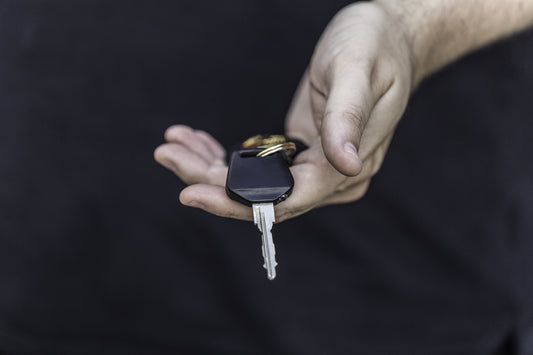Understanding Binge Drinking
Understanding Binge Drinking
Binge drinking is defined as the rapid consumption of a high number of alcoholic beverages in a short period of time. Sound familiar? You aren’t alone. About 75% of the alcohol consumed by adults in the United States is in the form of binge drinking, often in social settings. If you like to consume more than a few drinks once in awhile, you can probably relax. According to the Centers for Disease Control and Prevention (CDC), most people who binge drink are not dependent on alcohol.
Despite popular associations with delirious college students and toga parties, binge drinking crosses many lines, including age, gender, race, and geographical boundaries. Legal definitions of binge drinking vary widely between countries, too.
The National Institute on Alcohol Abuse and Alcoholism (NIAAA) defines binge drinking as a pattern of alcohol consumption that raises blood alcohol content (BAC) to 0.08% or more. Binge drinking usually involves the consumption of 5 or more drinks for men, and 4 or more drinks for women, within a 2-hour period, though binges can last up to several days. A “standard drink” is defined by the NIAAA as half an ounce of alcohol (e.g., one 12 oz. beer, one 5 oz. glass of wine, or one 1.5 oz. shot of distilled spirits).
Binge drinking is more common among men than women. And though college students and adolescents commonly binge drink, 70% of all binge drinking involves adults age 26 years and older.
Youthful Indiscretion – And Its Consequences
The proportion of youthful drinkers that binge is highest among 18- to 20-year-olds, many of them college students who may engage in binge drinking as a means of fitting in with others and avoiding social isolation. According to research, auto accidents are the main cause of death among adolescents, and fully one-third of all fatal accidents among 15- to 20-year-olds are alcohol-related. In addition, approximately 50% of all adolescent head injuries in the U.S. are associated with alcohol consumption. Adolescent binge drinking is also associated with violent behavior and suicide.
Binge drinking usually involves the consumption of 5 or more drinks for men, and 4 or more drinks for women, within a 2-hour period, though binges can last up to several days.
The younger and more often a child or adolescent binge drinks, the greater the likelihood he or she will develop an alcohol problem later in life. A large percentage of adolescents who binge drink also tend to consume other psychotropic substances.
Health Risks
Research reveals that the developmental stage of adolescence is similar to the developmental stage of the fetus with regard to sensitivity to the neurotoxic effects of alcohol. A significant risk of cognitive impairments and even irreversible brain damage has been associated with adolescent binge drinking.
In adults, regular binge drinking is associated with adverse effects on neurologic, cardiac, gastrointestinal, hematologic, immune, and musculoskeletal organ systems, as well as increased risk of alcohol-induced psychiatric disorders. Binge drinking can hasten severe brain damage because of its intense and repeated assaults on the brain. Binge drinking also increases the risk of stroke by a factor of 10 and is associated with sudden death. In addition, binge drinkers may experience blackouts (a form of amnesia) and, as a byproduct, associated neurocognitive deficits, as well as impaired memory.
In adults, binge drinking can hasten severe brain damage because of its intense and repeated assaults on the brain. Binge drinking increases the risk of stroke by a factor of 10 and is associated sudden death.
Binge Drinking and Public Safety
Binge drinking is also considered to be a significant public health issue and a significant factor in a myriad of social problems, increased economic costs, and higher disease transmission rates. Binge drinking is associated with an increased risk of unplanned sex, unprotected sex, unplanned pregnancies, and HIV infection. In addition, a significant percentage of both women and men have reported being assaulted in circumstances involving alcohol. Binge drinking has also been linked to high divorce rates, spousal abuse, and poor job performance.
Prevention and Treatment
A variety of  approaches have been recommended to reduce binge drinking. Some researchers believe that raising the legal drinking age, increasing screenings by healthcare providers, conducting interventions, and providing better access to counseling services may help. The CDC has proposed reducing liquor sales by increasing the cost of alcohol, imposing special excise taxes, restricting alcohol resale licenses, and imposing stricter enforcement of underage drinking laws.
approaches have been recommended to reduce binge drinking. Some researchers believe that raising the legal drinking age, increasing screenings by healthcare providers, conducting interventions, and providing better access to counseling services may help. The CDC has proposed reducing liquor sales by increasing the cost of alcohol, imposing special excise taxes, restricting alcohol resale licenses, and imposing stricter enforcement of underage drinking laws.
We believe the best method of preventing binge drinking for those above the legal drinking age is to stay aware of your alcohol intake---and that of others--by using a Professional Grade BACtrack Breathalyzer. By doing this, one ensures they have the most accurate readings available to rely on.
Ultimately, these and other measures are aimed at increasing awareness about binge drinking and its very personal and public consequences.
Shop for BACtrack Breathalyzers now.




